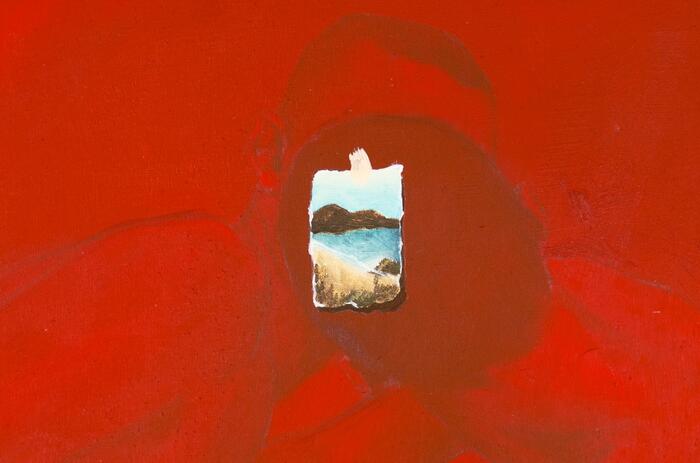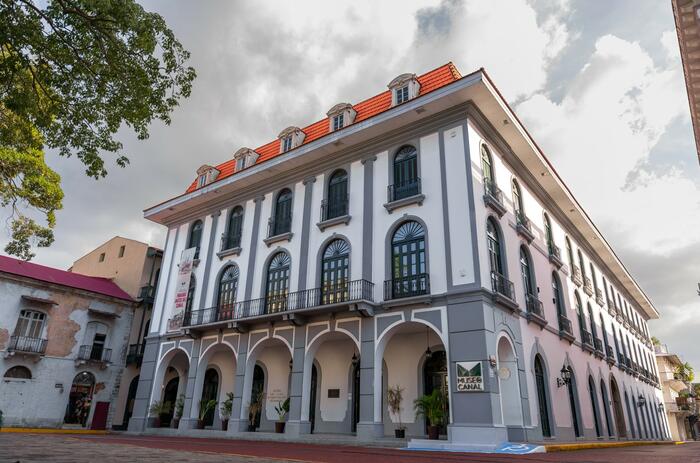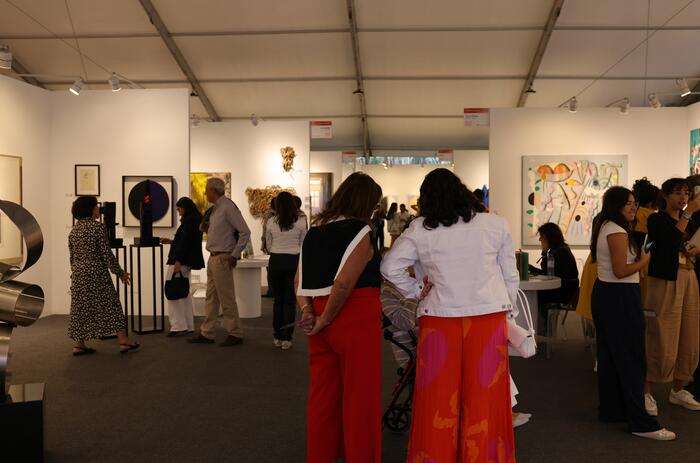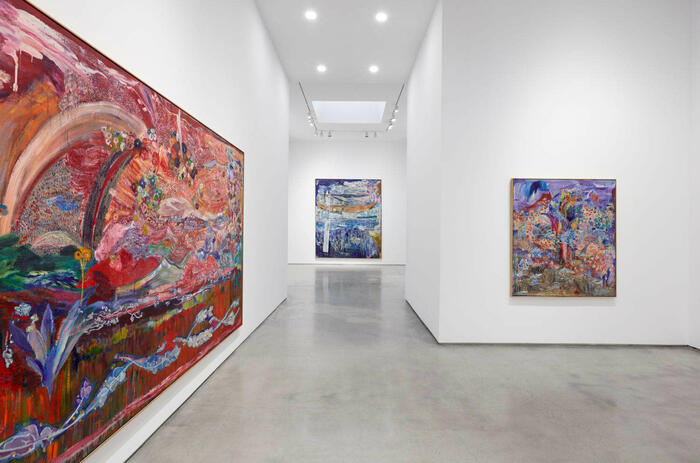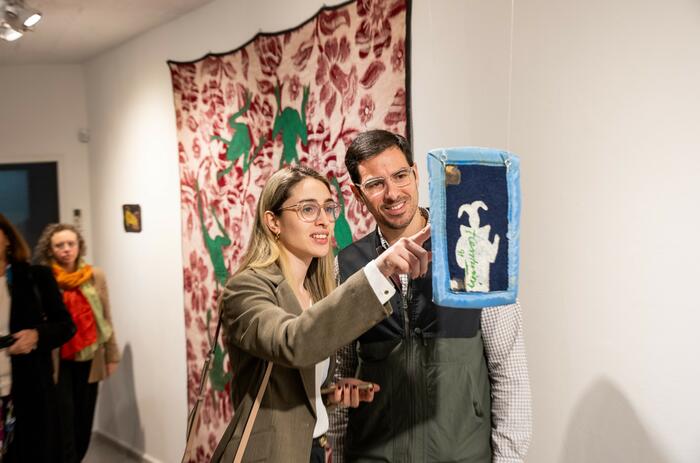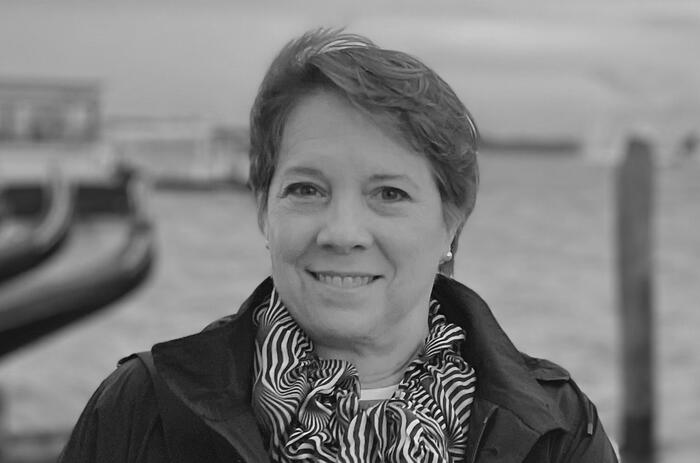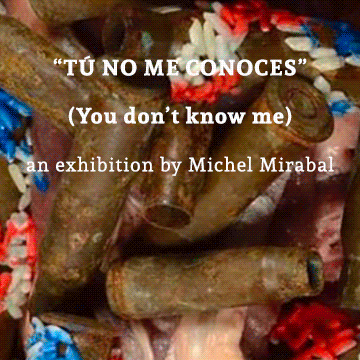PANAMA ART WEEK: SHAPING THE CENTRAL AMERICAN SCENE
With its inaugural edition, Panama Art Week stepped onto the contemporary art stage not as a marketplace for immediate transactions, but as a catalyst for long-term cultural positioning. Framed as a strategic effort to develop a regional hub for contemporary art, the initiative, organized by Pinta - known for championing Latin American art through fairs and platforms in Miami, Buenos Aires, Lima, and most recently Asunción - brought together key players in Panama's art ecosystem: artists, galleries, collectors, curators, museum professionals, and other cultural agents.

Beyond the immediate dynamism of its programming, Panama Art Week aims for long-term objectives that go beyond the exhibition format. It seeks to foster collaboration between public and private actors, generate new audiences, position the city as a cultural-tourist destination, and build networks between local and international figures. It also aims to strengthen the local art market, diversify Panama’s cultural offerings, and create training and reflection spaces that connect the local scene to its regional peers. This comprehensive approach allows us to see the Art Week not merely as an event, but as a structural development tool for the country’s art scene.
One of the most successful aspects of this first edition was its format: not a traditional art fair, but an Art Week spread across multiple venues, encouraging movement, dialogue, and the recognition of local actors. In a context like Panama’s, where the commercial infrastructure is not yet consolidated and international visibility is still limited, this model proves more strategic. The goal was not direct commercialization, but the creation of symbolic capital: visibility, relationships, institutional validation, and professional legitimacy - essential elements for building a market in the medium term.
The event also benefited from public sector support, particularly from the Ministry of Culture. The official opening of Panama Art Week 2025 was attended by Maruja Herrera, Minister of Culture, and took place at the Ciudad de las Artes. The event featured various performances by students and faculty from the national schools of dance, music, and visual arts, offering a symbolic launch that reaffirmed institutional commitment to contemporary culture. This support was visible from the very first day and continued -albeit more discreetly- throughout the week. Such institutional collaboration is essential to provide legitimacy and long-term sustainability to initiatives of this nature and underscores the need for continuous alignment between private efforts and public cultural policy.
A Small but Active Ecosystem
Panama’s art scene remains modest in terms of market scale, but it is supported by strong artists, a handful of consistent galleries, and a budding interest in contemporary collecting. Most of the country’s leading artists—such as Brooke Alfaro, Isabel De Obaldía, and Cisco Merel—enjoy local and regional recognition, but still face the typical barriers to entering the international market. In this context, Panama’s recent participation in the 2024 Venice Biennale with a national pavilion marked a turning point: it offered institutional visibility, curatorial validation, and a national narrative that can now be leveraged by key market players. The Art Week helped extend that international presence locally, with studio visits, gallery tours, and meetings with collectors. The agenda—well balanced between professional programming and public events—created opportunities for the various players in the ecosystem to connect, exchange ideas, and begin envisioning shared strategies.
Galleries, Foundations, and an Emerging Scene
Although Panama’s gallery landscape is still limited in size, all the key players that define the local scene were present. The selection stood out for its diversity and professionalism, reflecting an artistic community in the process of consolidating itself, with well-articulated and coherent programming. Projects like NG Art Gallery, Mateo Sariel, Arteconsult, and Yaco Art Gallery offered a strong mix of established and emerging artists. One particularly interesting space is DiabloRosso, which its founder Johann Wolfschoon describes as “a nonprofit commercial gallery.” It blends market activity with a strong commitment to the local emerging scene and functions more as a support platform than a traditional gallery in the strict sense.
Foundations such as Los Carbonell and Casa Santa Ana play a key role by providing resources, infrastructure, and visibility for artistic production, without the need for immediate commercial return. This kind of cultural philanthropy is still emerging in the region, but it has the potential to become one of the pillars of the ecosystem.
-
NG Gallery durante Pinta Panamá Art Week
Institutions and Private Support
At the institutional level, the Museo de Arte Contemporáneo de Panamá (MAC Panamá) stands as the leading reference for contemporary art in the country. Founded in 1962 as the Panamanian Institute of Art (Panarte) and transformed into a museum in 1983, MAC is a non-profit, non-governmental organization. Although it is privately run, its mission is public in nature, focused on promoting contemporary art from Panama and Latin America. Its sustainability relies largely on the support of companies, institutions, and individual patrons. The recent opening of a second space in Casco Viejo signals a clear intent to expand and enhance its visibility, in step with the growth of its collection and programming.
Other museums, such as the Museo del Canal - which has recently begun to incorporate contemporary art into its programming and is currently exhibiting the works shown in Panama’s pavilion at the Venice Biennale - and the Museo de la Mola, which focuses on the visual culture of the Guna people, broaden the institutional landscape and diversify the narratives present in the local art scene.
-
MAC Panamá, Pinta Panamá Art Week
In this context, the drive of the private sector—through both collecting and corporate sponsorship—emerges as a key factor in the development of contemporary art in Panama. A prime example is the aforementioned MAC, which is essentially a private initiative, supported by its Board of Directors and led by figures such as Antonio Murzi, one of the country’s most active collectors. In addition to chairing the institution, Murzi opened his collection to the public during Art Week, demonstrating how collecting can translate into structural support for institutions and tangible opportunities for artists. But this is not an isolated case. Other private collections, less visible yet equally committed, are beginning to play an increasingly important role.
Added to this is the support of entities like Mercantil Bank, which not only offered its spaces for professional gatherings (the Foro) but also showcased its own collection. This kind of corporate involvement goes beyond one-off sponsorship—it reflects a strategic commitment to building an environment where contemporary art can grow with greater stability and visibility.
-
El FORO de Pinta en el banco Mercantil
International Visibility, Dialogue, and Future Projection
A key moment of the week was the Foro of Pinta Panama Art Week, envisioned as a space for critical reflection on contemporary art scenes across Central America and the Caribbean. Curated by Mónica E. Kupfer—art historian, critic, and curator with a long-standing trajectory in the region—the Foro brought together experts and special guests to discuss the challenges and opportunities facing the regional art landscape. Kupfer, co-founder of the Panama Art Biennial and co-curator of Panama’s first national pavilion at the 2024 Venice Biennale, has been a pivotal figure in the development of curatorial thinking in the country. Her leadership lent the Foro depth and coherence, establishing it as a strategic platform for generating ideas, connecting stakeholders, and envisioning future agendas for art in Panama.
One of the most significant achievements of this Panama Art Week was its ability to draw international attention. The presence of curators, collectors, and journalists from Latin America and Europe expanded the event’s regional reach. But beyond this visibility, what truly matters is that Panama is beginning to shape its own narrative within the global art map—not yet as a consolidated market, but as an emerging scene with identity, ambition, and a will to connect.
The challenge moving forward will be to sustain that momentum beyond the event itself. The goal is to turn Pinta Art Week into a platform for ongoing development: promoting artist residencies, encouraging acquisitions, building institutional partnerships, and above all, fostering trust that Panama can become a relevant cultural hub in Central America.





